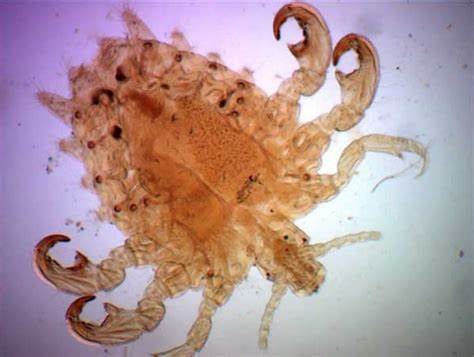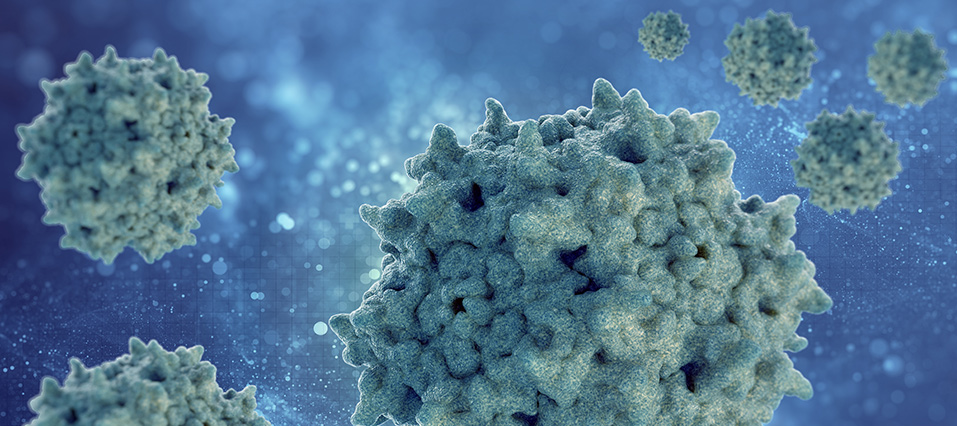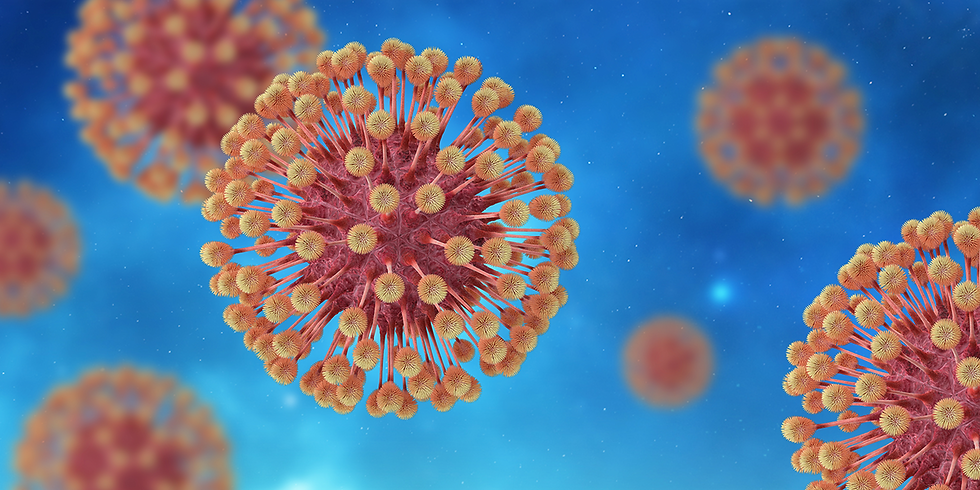- Aug 26, 2024
- 9 min read
What are pubic lice?
Pubic lice — also known as crabs — are small parasites that attach to the skin and hair near your genitals. Crabs aren’t dangerous, and they’re usually pretty easy to get rid of.
Pubic lice are super common.
Millions of people get infected with pubic lice every year. They are tiny insects that look like tiny versions of the crabs you see at the beach. They live on the skin and coarse hairs that are around your genitals, and they feed on your blood. Pubic lice spread really easily during sexual contact.
Public lice symptoms include pretty intense itching. But even though pubic lice can be uncomfortable, they don’t cause any serious health problems. It’s usually easy to get rid of them with over-the-counter medicines.
Getting pubic lice doesn’t mean you’re dirty — it has nothing to do with hygiene or cleanliness. Anybody can get pubic lice if they have close, personal contact with someone who has them. About 3 million people in the U.S. get pubic lice every year.
How do you get pubic lice (crabs)?
Crabs are usually spread through sex, because they like to live in pubic hair. Pubic lice move easily from one person’s hairs to another person’s hairs when their genitals touch or are very close to each other.
Most people get crabs during sex, but sometimes they’re spread through other kinds of close, personal contact. You can get pubic lice where other types of coarse hair — like eyelashes, eyebrows, chest hair, armpits, beards, and mustaches — touch places on someone’s body where crabs are. Sometimes pubic lice are spread by using an infected person’s clothes, towels, or bed.
Crabs don’t spread through quick, casual touching, like handshakes or hugs. And it’s really, really rare to get crabs from a toilet seat — crabs don’t live very long when they’re away from a human body, and they can’t hang onto smooth surfaces.
Even though crabs are into hair, they usually don’t like to hang out in the hair on top of your head. Pubic lice are different than head lice, and you usually don’t get crabs in the hair on your head. Head lice usually don’t show up in the pubic area, either.
What are the symptoms of pubic lice (crabs)?
The most common symptom of pubic lice is itching near your genitals. You may also see crabs or eggs in your pubic hair.
Pubic lice symptoms
Usually, the symptoms of pubic lice start about 5 days after you get them. Some people never have symptoms, or they think the symptoms are caused by something else (like a rash).
The most common symptom of pubic lice is intense itching in your pubic area. The itching and irritation is caused by your body’s reaction to the crabs’ bites.
Pubic lice symptoms include:
Lots of itching in your genital area.
Super small bugs in your pubic hair. You can usually see pubic lice by looking closely, or you may need to use a magnifying glass. Pubic lice are tan or whitish-gray, and they look like tiny crabs. They get darker when they’re full of blood.
Crab eggs (called nits) on the bottom part of your pubic hairs. Nits are really small and can be hard to see. They’re oval and yellow, white, or pearly. Nits usually come in clumps.
Dark or bluish spots on the skin where pubic lice are living. These spots come from the crabs’ bites.
Feeling feverish, run-down, or irritable.
Crabs usually hang out in your pubic hair around your genitals, which is why it’s easy to get them from sex. But crabs can sometimes end up in other kinds of coarse hair, like your eyelashes, eyebrows, chest hair, armpits, beard, or mustache. It’s really, really rare to get pubic lice in the hair on top of your head.
Do I have pubic lice?
People usually know they have pubic lice by having itching and seeing the tiny crabs. But a nurse or doctor can tell you for sure what’s going on.
How do I know if I have pubic lice?
Usually, people figure out on their own that they have pubic lice. You can sometimes see the little crabs in your genital area and/or their eggs (nits) stuck to the base of your pubic hair. It may be hard to find the lice or eggs, because there might not be that many and they’re super small. Using a magnifying glass can help, or a nurse or doctor can look for them with a microscope.
You can still have pubic lice even if you don’t see any crabs or eggs. If you’re itching a lot or you just think you might have crabs, it’s a good idea to get checked out by a nurse or doctor. If someone you had sex with in the past month has crabs, it’s not a bad idea to get the medicine from the drugstore and use it on yourself to be safe.
If you think you might have pubic lice, try not to freak out. Crabs aren’t dangerous, and they’re pretty easily cured with over-the-counter treatments.
Where can I get checked for pubic lice?
You can get tested for crabs (and other STDs) at your doctor’s office, a community health clinic, the health department. If you’re itching and uncomfortable, the sooner you get in and get pubic lice treatment, the sooner you’ll feel better.
Pubic lice are easy to treat — you usually don’t even need a doctor’s prescription. You can get over-the-counter pubic lice treatment at a drugstore, or from your nurse or doctor.
We can help you find the most convenient place based on your schedule, location, or ability to pay. Just contact us at 718-472-9400 and ask for JC or Johjan. We can even escort you to the place and speak for you, if you need it.
What’s the treatment for pubic lice?
Pubic lice treatments are easy to use and come in gels, shampoos, liquids, and foam. Most are sold over-the-counter in drugstores, so you can buy them without getting a prescription from a doctor first. Common brands are A-200, Rid, and Nix. Follow the directions that come in the package carefully. You may need to use the treatment more than once.
You can get stronger medicines for pubic lice with a prescription. If you have lice in your eyebrows or eyelashes, you need a special kind of treatment that you can only get from your nurse or doctor. If you’re pregnant or breastfeeding, talk to your nurse or doctor before using any treatment.
Anyone you’ve had intimate contact with should treat themselves at the same time, so you don’t pass crabs back and forth. Always use freshly-washed clothes, towels, and bedding after you finish treatment.
What do I need to do to get rid of pubic lice?
Even after you finish the treatment, most of the nits (lice eggs) will stay stuck to your hairs. You can pick them off with your fingernails or a fine-toothed comb.
Along with using medication, wash or dry clean all of your bedding and towels. Also wash or dry clean any clothing that you wore while you had crabs. Wash these fabrics on the hottest setting, and dry them on the hot cycle for at least 20 minutes.
You can also put fabrics that can’t be washed in a sealed bag for 2 weeks, until the crabs and their eggs die out. You can also vacuum rugs and furniture. You don’t need to call an exterminator or fumigate your home.
Tell your sexual partners and anyone else you’ve had intimate contact with during the last month that they may have crabs. You should all treat yourselves at the same time so you don’t re-infect each other. And don’t have sex or any other kind of intimate contact until everyone finishes their treatment and knows their crabs are gone for good. It’s also a good idea to get tested for other STDs.
If you still see live lice after 9-10 days, do the treatment again. And make sure you’ve washed everything you needed to, and that your sexual partners did the treatment too. If the crabs still don’t go away, talk to your nurse or doctor.
Is there a home remedy for public lice?
Home remedies like hot baths or shaving don’t work. Treatments that soothe itching (like hydrocortisone cream) can help you feel better, but they won’t cure your crabs. The only thing that will actually get rid of your crabs for good are medicines meant to kill pubic lice.
Trying to treat your pubic lice with home remedies can make your infection worse, and waiting to treat your pubic lice can make it more likely that you’ll spread the crabs to other people.
Pubic lice are easy to treat — you usually don’t even need a prescription. You can get over-the-counter pubic lice treatment at a drugstore, or from your nurse or doctor.
How do I avoid getting pubic lice?
Crabs are easily spread during sex, even if you use condoms. The only 100% sure way to prevent pubic lice is to not have intimate contact. Crabs are pretty contagious and spread easily when people’s genitals and pubic hair rub together. So the only definite way to prevent crabs is to not have sex.
Crabs may seem kind of scary, especially because they spread easily. But try not to stress out too much about getting them. The good news is pubic lice are easy to treat and don’t cause serious health problems.
Condoms are super great at preventing other STDs (like HIV), but they don’t protect you from crabs. It’s still important to have safer sex by using condoms and getting tested for STDs regularly, so you can stay healthy.
If someone you know has crabs, avoid sharing clothes, towels, and beds with them until they finish treatment and wash all their stuff. If you’ve had sex with them in the previous month, use treatment to make sure you don’t pass crabs back and forth between you.
How can I prevent spreading pubic lice?
Carefully follow all the steps for treating crabs. Don’t have sex until you and your partner(s) have all finished your pubic lice treatments, and avoid close, personal contact with people. Don’t share clothes or bedding until after you’re totally free of pubic lice and have washed everything properly.

Pediculosis (piojos de cabeza, piojos del cuerpo, piojos púbicos)
¿Qué es la pediculosis?
La pediculosis es una infestación de las partes del cuerpo con vello o pelo o de la ropa, con huevos o larvas de piojos (liendres) o piojos adultos. Las etapas larvarias de este insecto se alimentan con sangre humana, provocando gran picazón. Los piojos de la cabeza están normalmente localizados sobre el cuero cabelludo, los púbicos en el área púbica y los piojos corporales a lo largo de las costuras de la ropa. Los piojos del cuerpo se dirigen a la piel para alimentarse y luego regresan a la ropa.
¿Quiénes contraen la pediculosis?
Cualquier persona se puede infectar con piojos en condiciones convenientes de exposición. La pediculosis se contagia fácilmente de persona a persona durante el contacto directo. Las infestaciones de piojos de la cabeza son frecuentes en los colegios e instituciones. Las infestaciones de piojos púbicos se encuentran entre personas sexualmente activas. Las infestaciones de piojos corporales pueden presentarse en personas que vivan en condiciones de hacinamiento e insalubres, donde se cambia y lava la ropa con poca frecuencia.
¿Cómo se contagia la pediculosis?
Tanto los piojos de cabeza como los corporales, pueden transmitirse mediante el contacto directo con una persona infestada. El compartir ropa, los peines o los cepillos también puede facilitar la transmisión de estos insectos. Mientras que otros medios son posibles, los piojos púbicos son transmitidos con mayor frecuencia a través del contacto sexual.
¿Cuáles son los síntomas de la pediculosis?
Generalmente, la primera indicación de una infestación es sentir picazón o rascarse en el área del cuerpo de la que los piojos se alimenten. Si la persona se rasca la parte de atrás de la cabeza o alrededor de las orejas, debe ser examinada en busca de liendres (huevos de piojos) en el cabello. La picazón alrededor del área genital debe conducir a la verificación de la presencia de piojos púbicos o liendres. La persona puede rascarse tan intensamente que puede provocar una infección bacteriana secundaria en esas áreas.
¿Qué tan pronto aparecen los síntomas?
Pueden pasar entre dos y tres semanas o más para que una persona note la picazón intensa asociada a esta infestación.
¿Durante cuánto tiempo puede una persona infectada contagiar la pediculosis?
La pediculosis puede contagiarse mientras haya piojos o liendres vivos en la persona o ropa infestada.
¿Cuál es el tratamiento para la pediculosis?
Para el tratamiento de personas con piojos en la cabeza, se prefiere el uso de champúes o acondicionadores medicados que contengan piretrinas. Los productos que contienen piretrinas son de venta libre, sin embargo, los que contienen lindane sólo se pueden comprar con receta médica. También hay champúes con lindane disponibles, pero no se recomienda su uso en bebés, niños pequeños y mujeres embarazadas o que estén lactando. Se recomienda repetir el tratamiento entre siete y 10 días después, para asegurar que no hayan sobrevivido liendres. Hay peines especiales disponibles para retirar las liendres del cabello. Se debe seguir al pie de la letra las instrucciones del champú con relación a la dosis y duración del tratamiento.
¿Qué se puede hacer para prevenir el contagio de la pediculosis?
Se debe evitar el contacto físico con personas infestadas y sus pertenencias, especialmente ropa, accesorios para la cabeza y ropa de cama (sábanas, etc.). Es muy valiosa la educación de la salud con relación al ciclo vital de los piojos, el tratamiento apropiado y la importancia de lavar la ropa y la ropa de cama con agua caliente o lavarla en seco, para destruir los piojos y liendres. Además, es importante hacer una inspección directa periódica de la cabeza de los niños y cuando sea indicado, del cuerpo y de la ropa, especialmente de niños en colegios, instituciones, asilos y campamentos de verano.
¿Dónde puedo ir para saber si tengo pediculosis?.
Nosotros podemos ayudarte a encontrar el lugar más conveniente para ti según tu horario, ubicación o capacidad para pagar. Incluso te podemos acompañar y hablar por ti, si lo necesitas. Sólo llámanos al 718-472-9400 and ask for JC or Johjan.
%20(400%20%C3%97%20100%20px)%20(200%20%C3%97%20100%20px)%20(200%20%C3%97%2075%20px)%20(200%20%C3%97%2050%20px)%20(150%20%C3%97%205.png)



